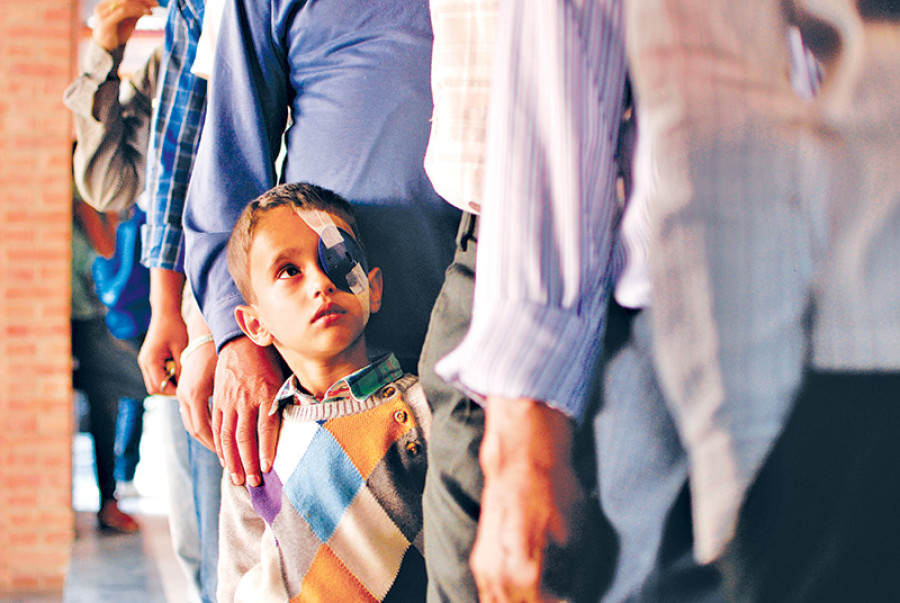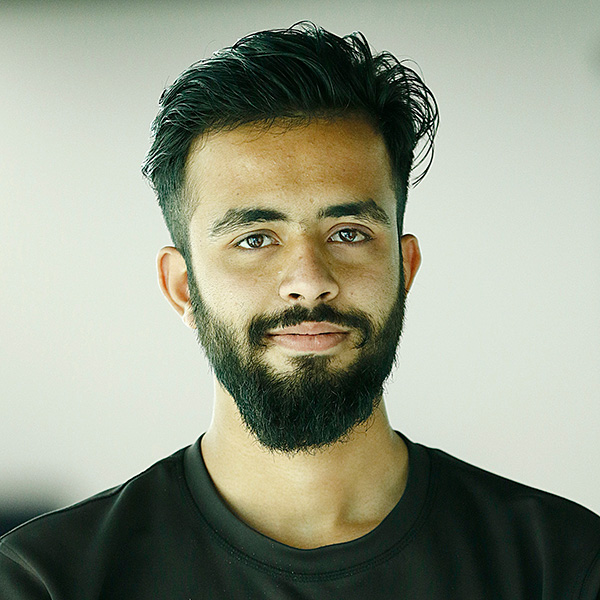National
Cataract, treatable eye condition in old people, affects children too
Cataract, a condition in which the lens of the eye gradually becomes opaque, resulting in blurry vision and eventually blindness, accounts for 65 percent of avoidable blindness in Nepal.
Nayak Paudel
Cataract, a condition in which the lens of the eye gradually becomes opaque, resulting in blurry vision and eventually blindness, accounts for 65 percent of avoidable blindness in Nepal.
According to ophthalmologists, cataract usually affects the ageing and elderly population the most, but with an increase in access to health services in recent years, even young children and newborns have been diagnosed with the condition. Medical professionals estimate that one in every 250
children will suffer from cataract prior to birth or during childhood.
“Children suffer from various types of refractive error [blurred vision caused by the inability to focus images on the retina]. It is imperative that their eyes should be checked from the day they are born to prevent any issues and to receive proper treatment,” Dr Rohit Saiju, an ophthalmologist at the Tilganga Institute of Ophthalmology, told the Post.
“If the eye conditions of the children are not diagnosed and treated early, it can have severe consequences over the course of time,” Saiju added. “Most conditions are treatable so everyone should have their eyes checked on a regular basis.”
Malnutrition, diabetes, vitamin deficiencies, complicated pregnancy and even heredity are some of the causes behind cataracts and visual impairment in Nepal, affecting poor people in rural areas the most.
“People in rural areas are not aware of cataract. We organise eye camps and offer free surgery so that they can see clearly again,” Ambika Poudyal, an official at Lions Club, told the Post.
“During our eye camps, we have come across cases where people with cataract conditions have been deprived of treatment due to lack of awareness that this is treatable and inexpensive.”
Tilganga Institute of Ophthalmology is one of the leading institutions in the country working to take eye care to remote areas of the country and correct the notion that cataract is untreatable or its treatment is expensive.
The institutes’s Outreach Micro Surgical Eye Camps from 1994 to 2017, spearheaded by the noted ophthalmologist Dr Sanduk Ruit, has conducted a record 109,000 free cataract surgeries in and outside Nepal.
The institutes’s eye hospital in the Capital, which also offers subsidised and free treatment for the needy, draws patients in droves every day and has catered to 139,600 cataract patients, besides those with other conditions.
“Most patients come to us only after their cataract condition has worsened or matured. Cataract can be cured if it is detected earlier so regular eye check-up is advised,” chief executive officer at the institute, Dr Reeta Gurung, told the Post.
“This condition usually affects people above 40 years of age but it can be cured through surgery.” Two recent reports-Epidemiology of Blindness and Eye Health Mid-term Review- reveal that some 10.25 million Nepalis suffer from some form of visual impairment while some 125,000 people are blind.




 7.12°C Kathmandu
7.12°C Kathmandu















